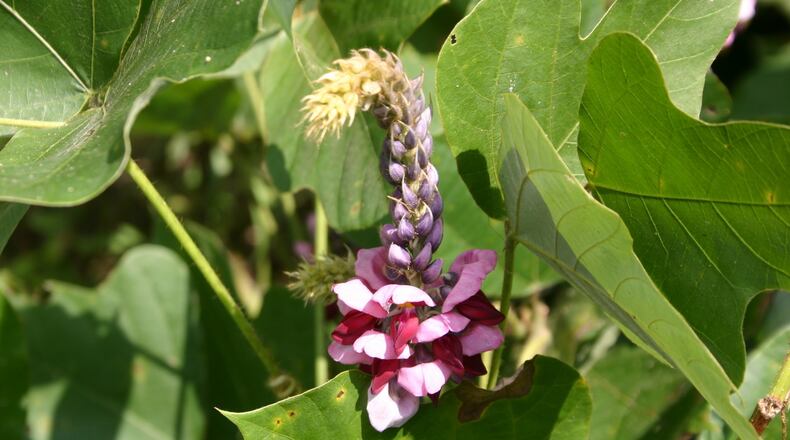Q: I live in Nevada and would like to try growing kudzu as a indoor house plant. Do you know where I can purchase seeds? — Margie Byrne, Reno
A: As we say in the South, "Margie, Margie, Margie … are you tetched in the head?" But we also say, "Here, hold my beer while I try this!"
You obviously know that kudzu is invasive in the South. I don’t think it would survive a Nevada winter outdoors, so raising the vine indoors is your only hope. November is a good time to collect seeds, so if you have any friends in Georgia, they could go collect some for you. Otherwise, I found seeds available on eBay.
Q: I planted a new lawn in my backyard using 80 pounds of seed over 4,000 square feet. By the end of September, the grass was lush, green and 4 inches tall. But, after a few days, the grass literally disappeared and I am left with a dirt backyard again. — Jim Tuttle, Marietta
A: You used too much seed! The recommended rate is 5-6 pounds per thousand square feet. You should have spread only 20-25 pounds. When fescue is sown too thickly, the seedlings quickly develop pythium blight, characterized by quick browning and seedling death. It's worth a try to replant now. Scratch the area with an iron rake and scatter 5 pounds of seed per thousand square feet. Irrigate to apply just enough water to keep the top inch of soil moist but never soggy. No fertilizer is needed.
Q: Would crape myrtles be classified as a tree or large bush? Our neighborhood is 10 years old and many homeowners are removing their oaks and maples and replacing with crape myrtles. — Tex Prater, email
A: I think the definition varies according to the form the crape myrtle naturally wants to assume. I have a 3-foot high 'Pokomoke' crape myrtle that is nothing if not a bush. But my 30-foot tall 'Natchez' is definitely a tree. If your neighbors are worried that the ultimate size of oaks and maples would be too large for their homesite, I could see the point of removing the large trees. But if there is plenty of room, I see no reason to remove stately oak trees.
Q: Is there anything I can do to stop or delay the onset of a pine bark beetle attack? — George Simms, Cumming
A: The best defense is to help the trees fight their own fights. To that end, keep the trees watered in summer. Pines can effectively thwart borer invasions by drowning them with sap. If the soil is dry, though, the tree has no “ammunition.” No homeowner insecticide sprays are effective.
About the Author
Keep Reading
The Latest
Featured



